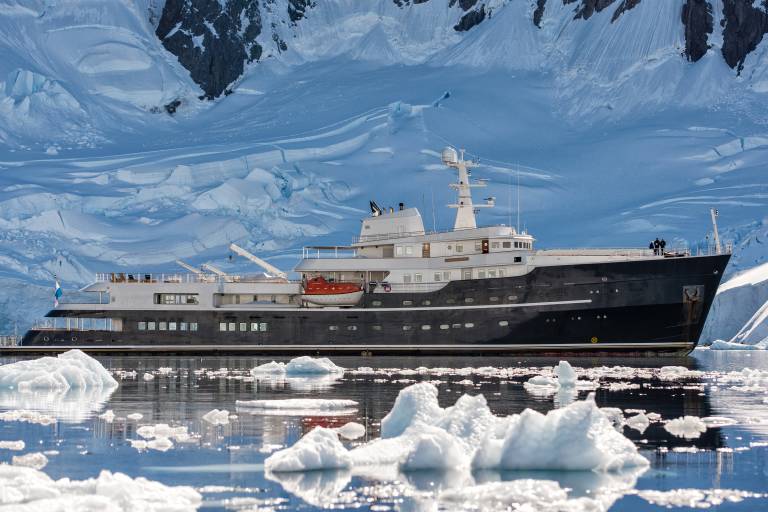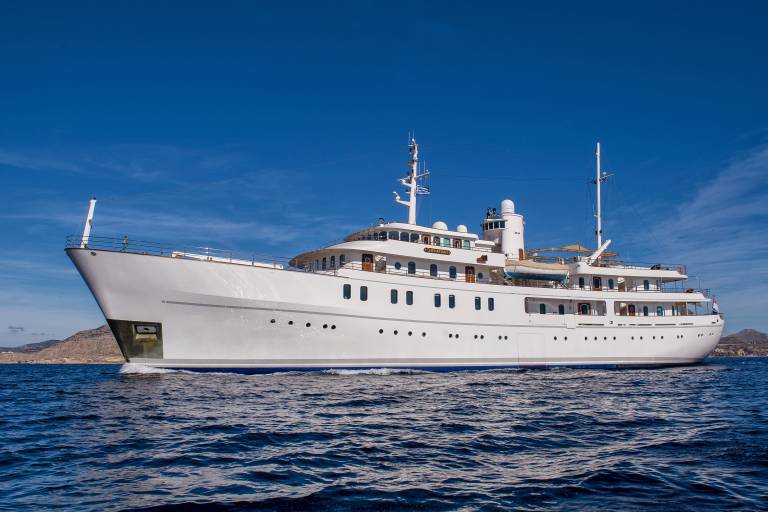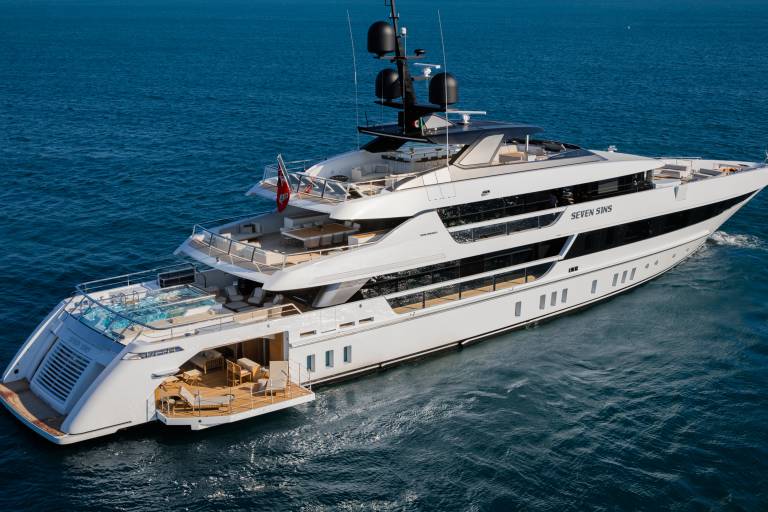Length

The Most Exclusive Destination
Isla Lobos to Isla Santa Cruz. The Galapagos Islands are renowned for there beauty and 'Wild at Heart' exclusivity. Discover by superyacht or scientific expedition.

Isla Lobos to Isla Santa Cruz. The Galapagos Islands are renowned for there beauty and 'Wild at Heart' exclusivity. Discover by superyacht or scientific expedition.

Day 01
Arrival in San Cristobal Island and transfer to the yacht. Your Captain & Guide will introduce you to the yacht and the incredible Galapagos islands. Cruise to Isla Lobos.
Isla Lobos is a small island named after the sea lions that rest and play on its rocky shores. It is also home to blue-footed boobies, great frigate-birds, brown pelicans, lava gulls, common noddies, yellow warblers and small and medium ground finches. There is good snorkelling in the clear waters of the channel, and the chance to swim with sea lions.

Day 02
At Punta Pitt on San Cristobal Island, climb the steep narrow path onto a plateau surrounded by red-hued hills. Depending on the time of year, spot nesting marine iguanas, red-footed boobies and other marine birds down on the cliffs.
In the afternoon, cruise to Kicker Rock, where rocks rise 500ft from the ocean like a sleeping lion, hence its name in Spanish, ‘León Dormido’. León Dormido is a small, distinctive island that comprises two rocks, home to a large colony of sea birds. Kicker Rock is an excellent dive site with many reef fish as well as hammerhead and Galápagos sharks. Sightings of large rays and turtles are common (although not guaranteed). There is also fantastic snorkeling in the turquoise waters.
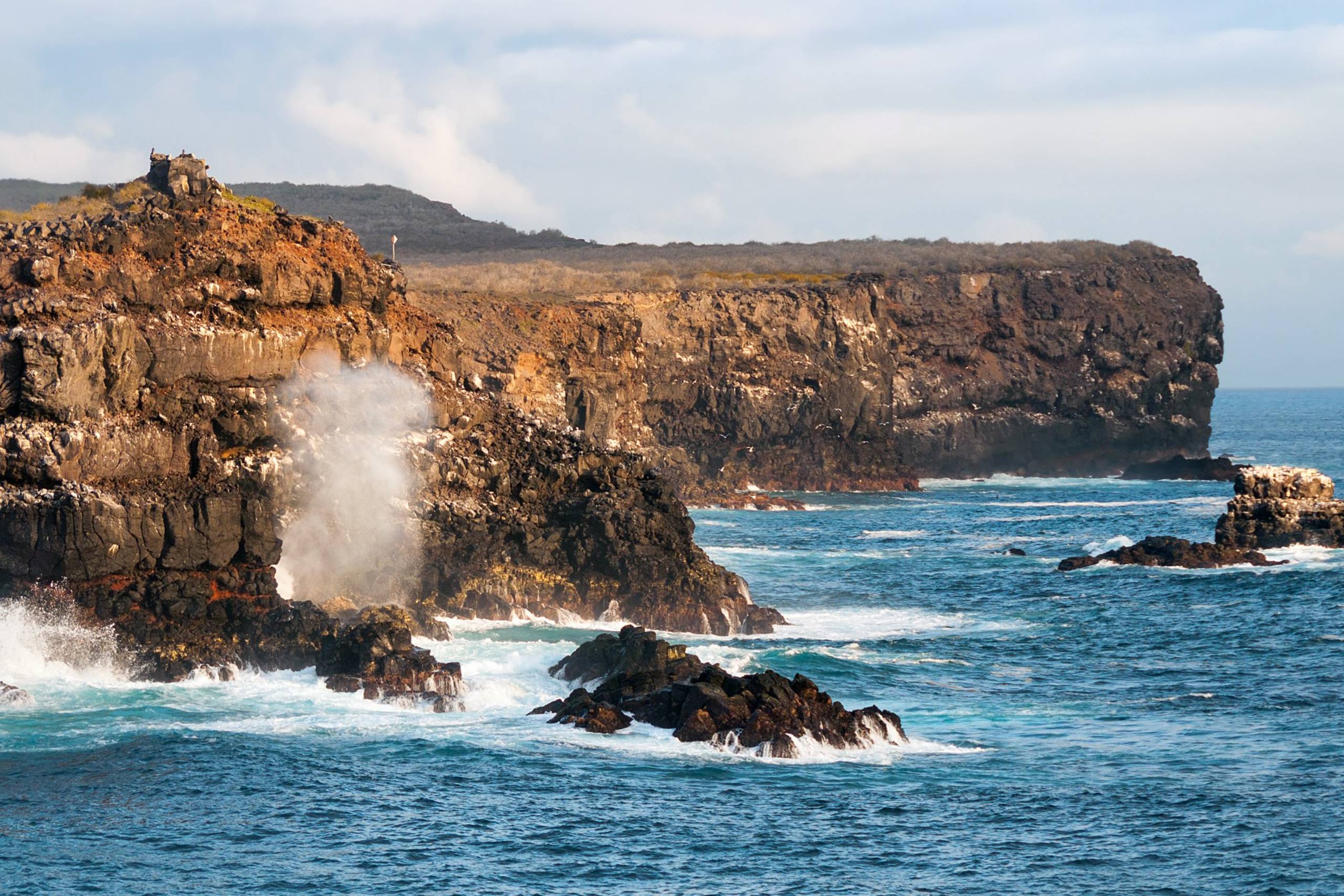
Day 03
Española, the southernmost island, has the densest and most diverse concentration of wildlife. Despite the dry climate, the island is one of the world's only known nesting sites for the Waved Albatross (aka Galapagos Albatross). From April to December this island is covered with these adorably clumsy birds.
Located on the north-eastern coast of Hood, Gardner Bay offers an excellent beach for relaxing, swimming and observing sea lions and even sharks in the crystal clear waters.
SUAREZ POINT is home to Blue footed boobies, Nazca boobies, swallow-tailed gulls, oystercatchers and the majestic waved albatross. It is also famous for marine iguanas with unique copper-red patches. This is one of the richest wildlife locations in the Galapagos.
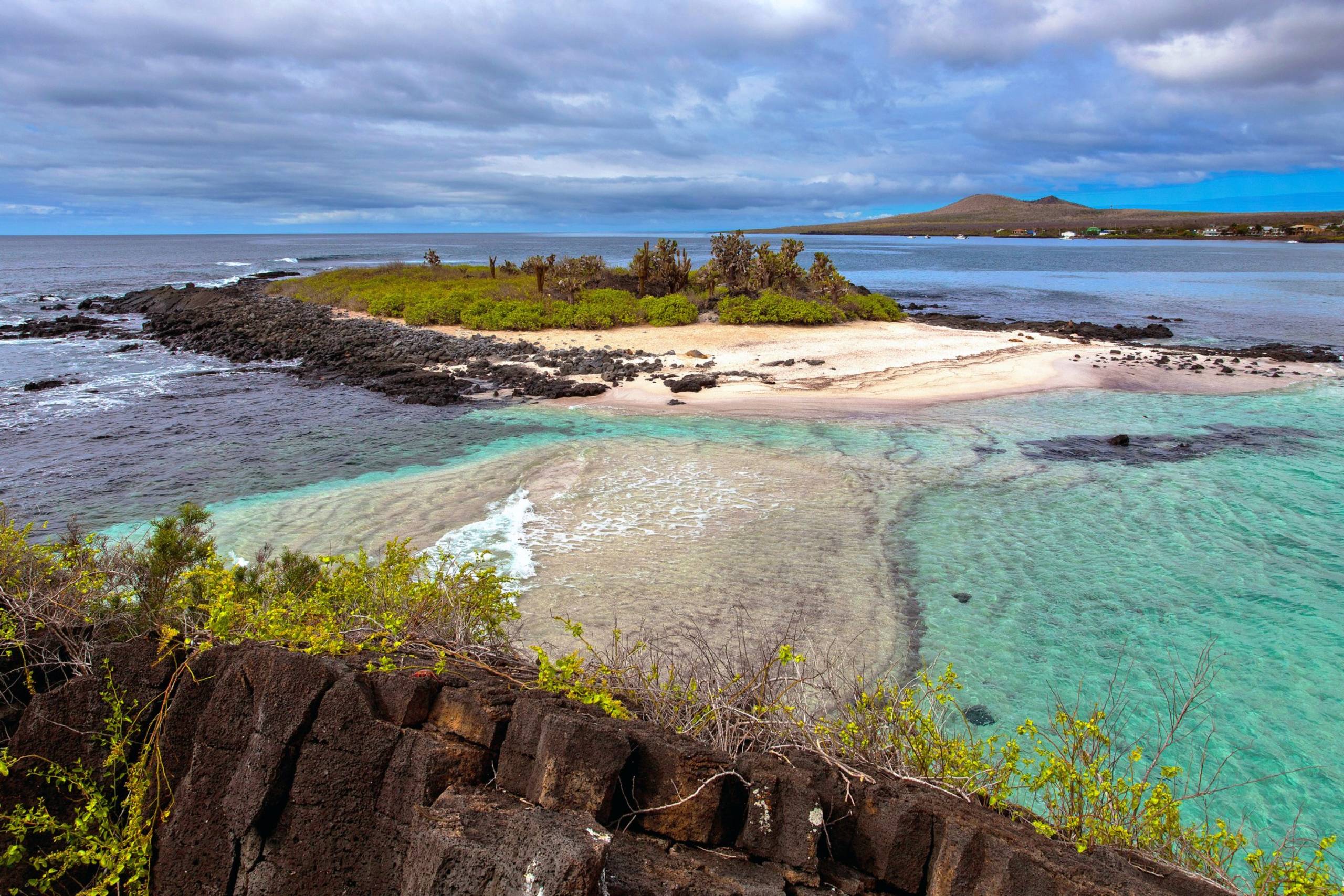
Day 04
As one of the oldest islands, Floreana has the most interesting cultural history. It has stories of marooned whales, prisoners and colonists as well as bizarre disappearances and legends.
Punta Cormorant is Noted for its volcanic green olivine crystals. It offers a trail overlooking a saltwater lagoon that is a favorite of flamingos. Beyond the lagoon, the trail leads to a magnificent white-sand beach. Green sea turtles lay their eggs in the sands here during the night, leaving tracks leading to and from the sea.
After lunch cruise to Post Office Bay, The best-known site on Floreana. This is a white-sand beach where sailors used to post and receive letters in a barrel. The tradition continues – leave your postcard in the barrel and see how long it takes to be delivered. Look for a postcard with your own address at the same time! Post Office Bay has left a legacy of pirates, whalers, scientific expeditions, and intense stories. Later, kayak or ride the yacht’s dinghies to the west, through a small set of islets with a sea lion colony, boobies and mangroves.
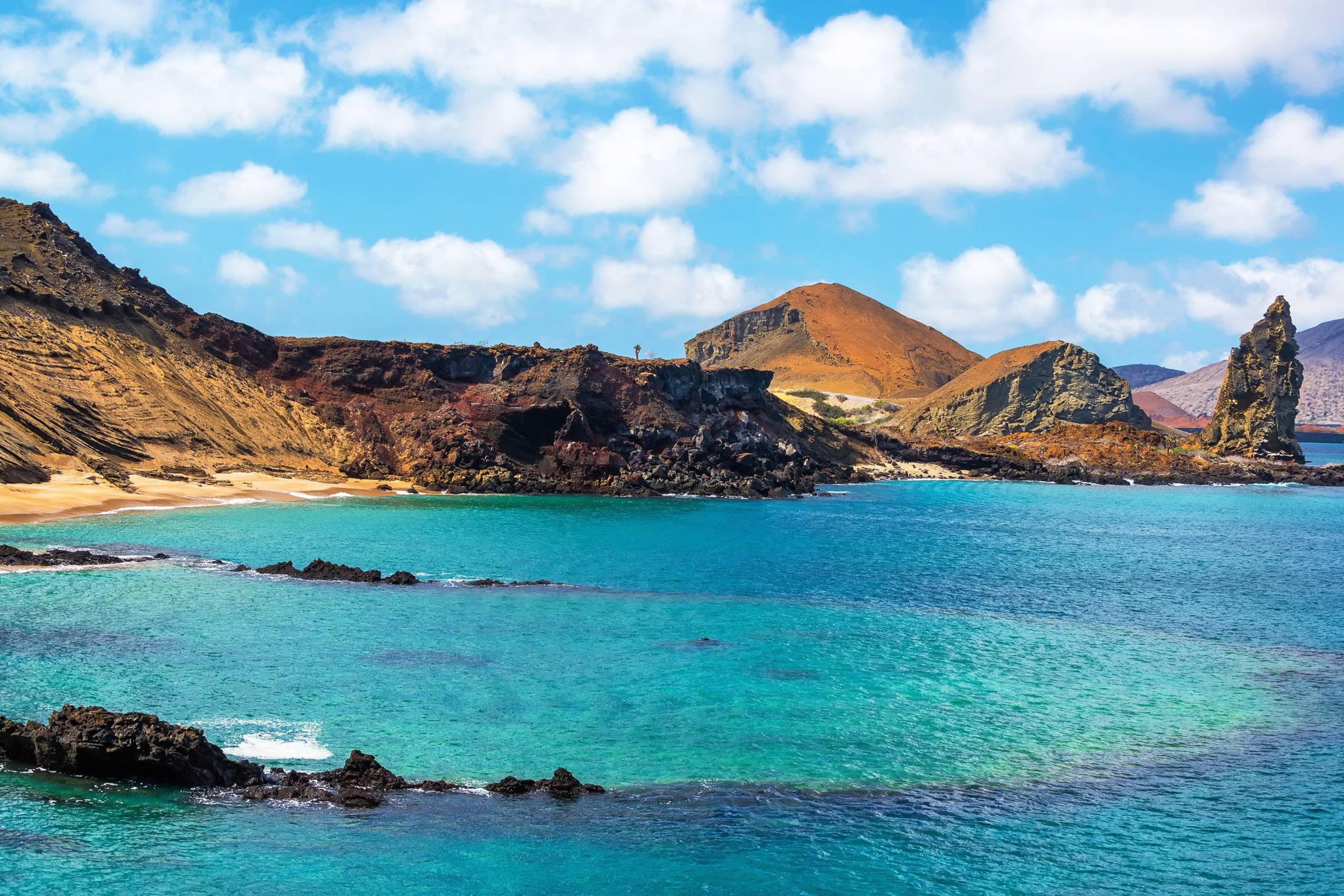
Day 05
North Seymour is home to several species of marine bird: swallow-tailed gulls, blue-footed boobies, noddy terns and both the great and the magnificent frigate birds compete for nesting sites. Land iguanas are found alongside marine iguanas and sea lions.
North Seymour is a low, flat island located north of Baltra, uplifted from the sea by underground seismic activity.
After lunch, visit Bartolome Island for swimming and snorkelling. Famous for its Pinnacle Rock, Bartolome is home to a small rookery of Galapagos penguins. swim and snorkel around Pinnacle Rock, or walk to the other side of the island to see sea turtles nesting and sharks swimming close to shore. Bartholomew is the most photographed island in the Archipelago.
Walk through an unusual lava landscape, and then up some wooden stairs to reach the summit with spectacular views. On this island, sea lions, Galapagos penguins, pelicans, Galapagos hawks, turtles and sharks can also be spotted.
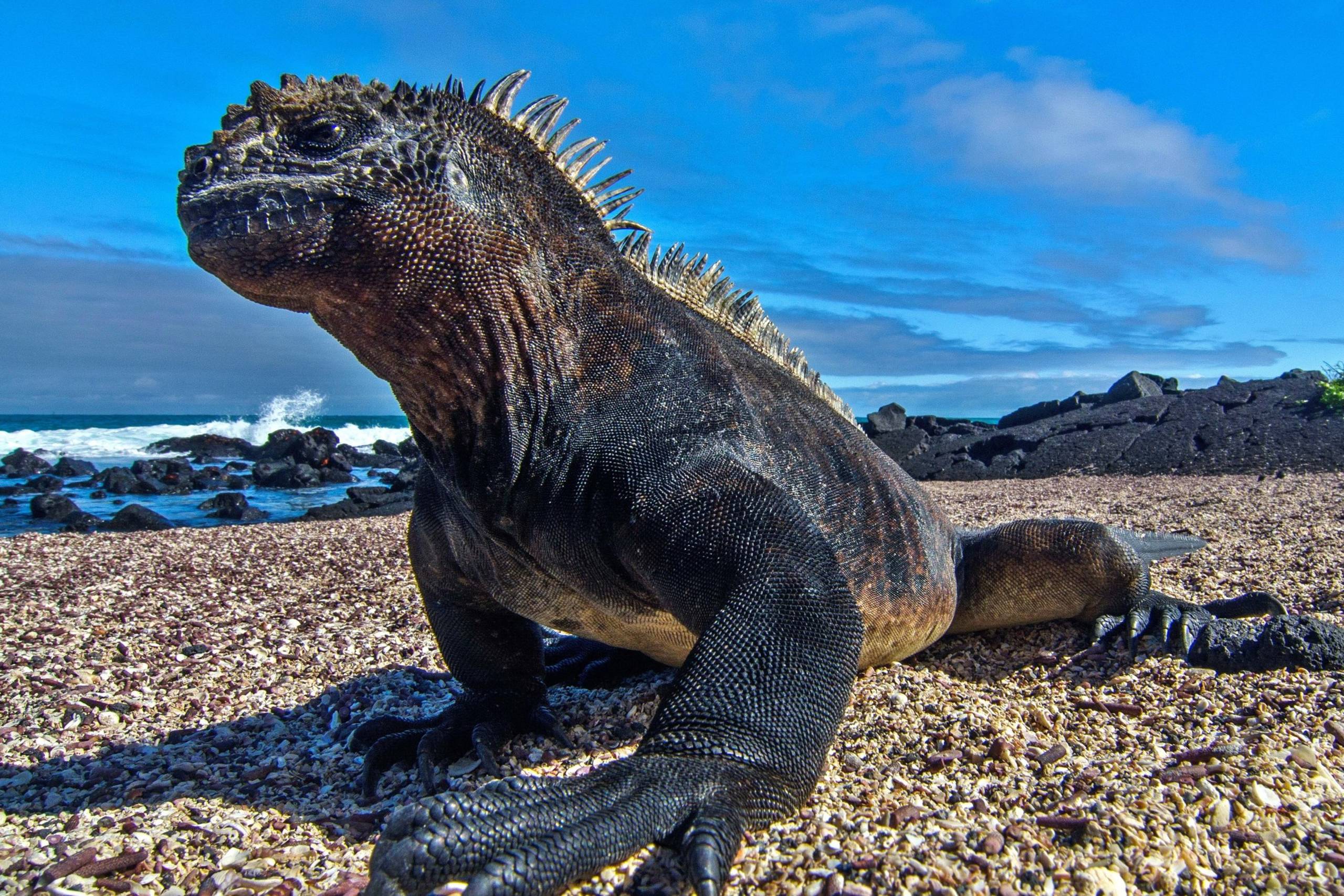
Day 06
A morning visit to Santa Cruz is the best way of saying goodbye to the Galapagos.
Las Bachas is a beautiful white-sand beach on the northern coast of Santa Cruz Island. You may see flamingos, Sally Lightfoot crabs, hermit crabs, black necked stilts and whimbrels. Sea turtles also nest off the beach.
In the afternoon, transfer to the airport of Baltra for onward travel.
Fond farewells from the crew.
Arrival in San Cristobal Island and transfer to the yacht. Your Captain & Guide will introduce you to the yacht and the incredible Galapagos islands. Cruise to Isla Lobos.
Isla Lobos is a small island named after the sea lions that rest and play on its rocky shores. It is also home to blue-footed boobies, great frigate-birds, brown pelicans, lava gulls, common noddies, yellow warblers and small and medium ground finches. There is good snorkelling in the clear waters of the channel, and the chance to swim with sea lions.

At Punta Pitt on San Cristobal Island, climb the steep narrow path onto a plateau surrounded by red-hued hills. Depending on the time of year, spot nesting marine iguanas, red-footed boobies and other marine birds down on the cliffs.
In the afternoon, cruise to Kicker Rock, where rocks rise 500ft from the ocean like a sleeping lion, hence its name in Spanish, ‘León Dormido’. León Dormido is a small, distinctive island that comprises two rocks, home to a large colony of sea birds. Kicker Rock is an excellent dive site with many reef fish as well as hammerhead and Galápagos sharks. Sightings of large rays and turtles are common (although not guaranteed). There is also fantastic snorkeling in the turquoise waters.

Española, the southernmost island, has the densest and most diverse concentration of wildlife. Despite the dry climate, the island is one of the world's only known nesting sites for the Waved Albatross (aka Galapagos Albatross). From April to December this island is covered with these adorably clumsy birds.
Located on the north-eastern coast of Hood, Gardner Bay offers an excellent beach for relaxing, swimming and observing sea lions and even sharks in the crystal clear waters.
SUAREZ POINT is home to Blue footed boobies, Nazca boobies, swallow-tailed gulls, oystercatchers and the majestic waved albatross. It is also famous for marine iguanas with unique copper-red patches. This is one of the richest wildlife locations in the Galapagos.

As one of the oldest islands, Floreana has the most interesting cultural history. It has stories of marooned whales, prisoners and colonists as well as bizarre disappearances and legends.
Punta Cormorant is Noted for its volcanic green olivine crystals. It offers a trail overlooking a saltwater lagoon that is a favorite of flamingos. Beyond the lagoon, the trail leads to a magnificent white-sand beach. Green sea turtles lay their eggs in the sands here during the night, leaving tracks leading to and from the sea.
After lunch cruise to Post Office Bay, The best-known site on Floreana. This is a white-sand beach where sailors used to post and receive letters in a barrel. The tradition continues – leave your postcard in the barrel and see how long it takes to be delivered. Look for a postcard with your own address at the same time! Post Office Bay has left a legacy of pirates, whalers, scientific expeditions, and intense stories. Later, kayak or ride the yacht’s dinghies to the west, through a small set of islets with a sea lion colony, boobies and mangroves.

North Seymour is home to several species of marine bird: swallow-tailed gulls, blue-footed boobies, noddy terns and both the great and the magnificent frigate birds compete for nesting sites. Land iguanas are found alongside marine iguanas and sea lions.
North Seymour is a low, flat island located north of Baltra, uplifted from the sea by underground seismic activity.
After lunch, visit Bartolome Island for swimming and snorkelling. Famous for its Pinnacle Rock, Bartolome is home to a small rookery of Galapagos penguins. swim and snorkel around Pinnacle Rock, or walk to the other side of the island to see sea turtles nesting and sharks swimming close to shore. Bartholomew is the most photographed island in the Archipelago.
Walk through an unusual lava landscape, and then up some wooden stairs to reach the summit with spectacular views. On this island, sea lions, Galapagos penguins, pelicans, Galapagos hawks, turtles and sharks can also be spotted.

A morning visit to Santa Cruz is the best way of saying goodbye to the Galapagos.
Las Bachas is a beautiful white-sand beach on the northern coast of Santa Cruz Island. You may see flamingos, Sally Lightfoot crabs, hermit crabs, black necked stilts and whimbrels. Sea turtles also nest off the beach.
In the afternoon, transfer to the airport of Baltra for onward travel.
Fond farewells from the crew.

Yachts For Charter
We use cookies to enhance your browsing experience, analyse our traffic and provide personalised marketing. You can choose whether to accept these, or reject all but essential cookies, according to our Cookie Policy.
let's chat.
Get in touch with one of our teams around the world
Where you'll find us
Monaco — MC
+377 93 50 12 12London — UK
+44 20 7584 1801Fort Lauderdale — US
+1 954 278 3970Auckland — NZ
+64 9 281 5133Contact us
[email protected]Length
Price per week
Dates
Size
Length
Price
Price per week
When
Dates
0 Results
SearchLength
Price per week
Build range
Size
Length
Price
Price per week
Year
Build range
0 Results
Search